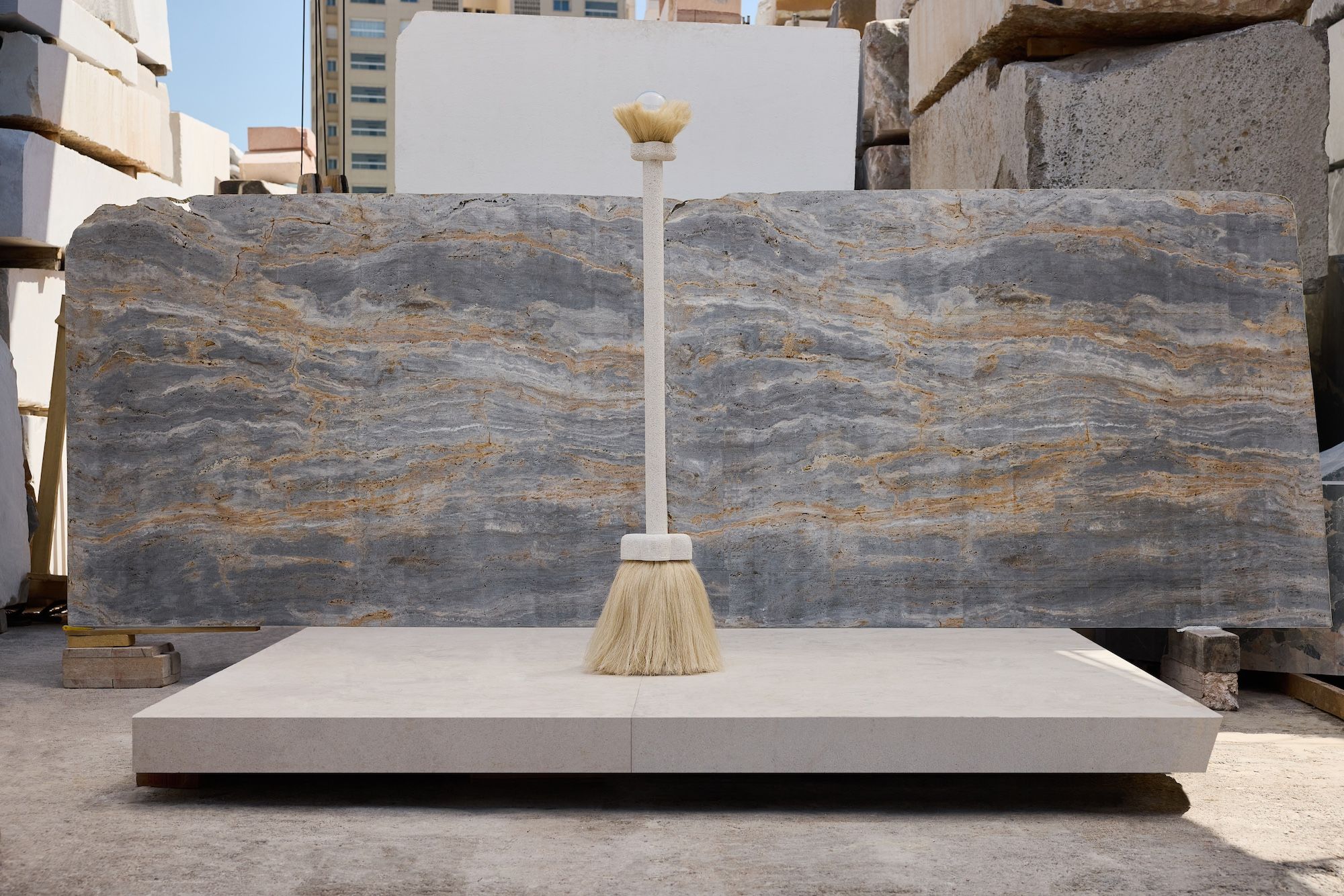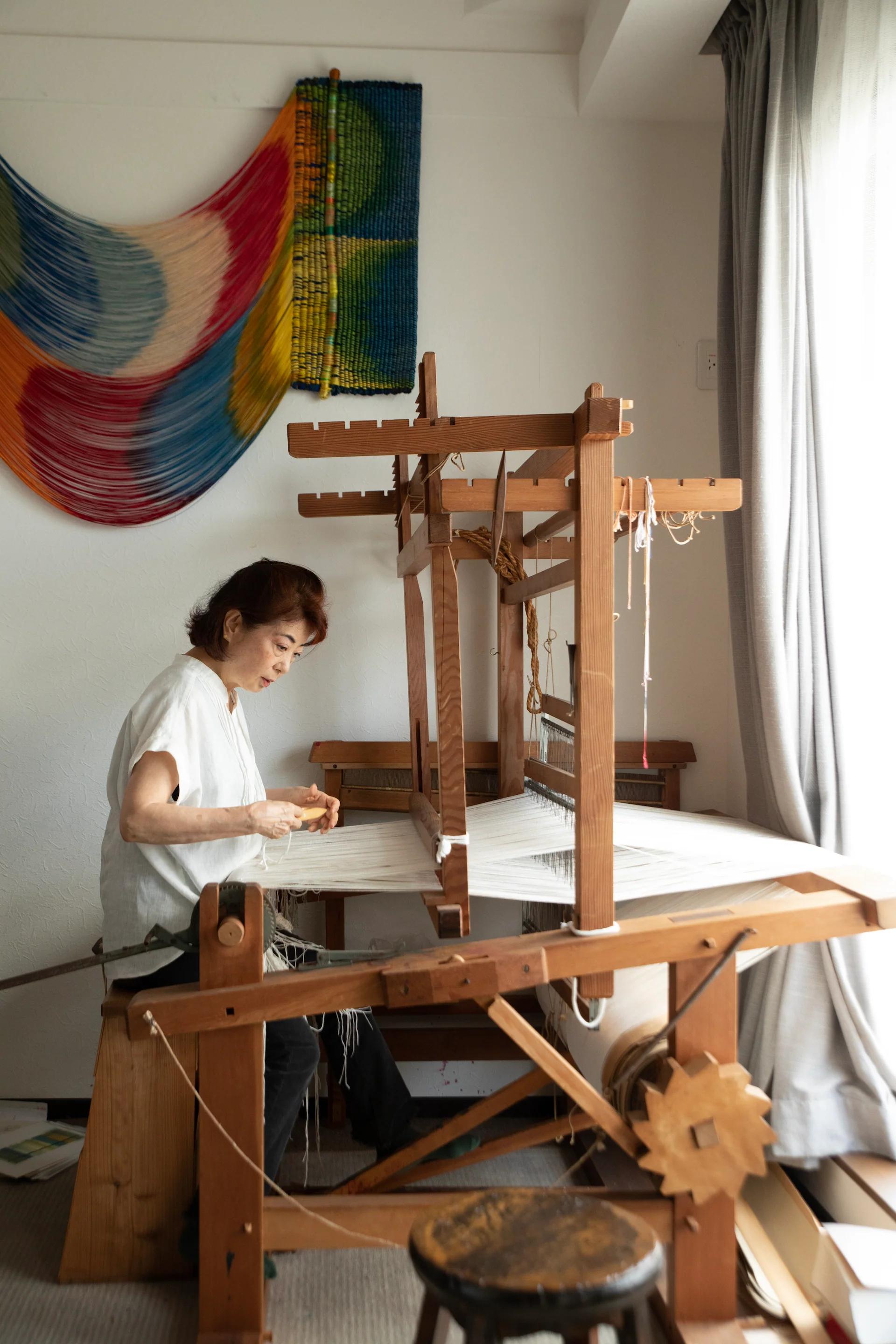HOW TO MAKE IT DECEMBER 21 2021
by Song-I Saba
The inimitable Dutch designer gives Song-I Saba a tour of his epic “slow design” campus in Eindhoven

ROOM 13 AT HOTEL PIET HEIN EEK IN EINDHOVEN
Photo © Piet Hein Eek
Piet Hein Eek and the city of Eindhoven have been good for each other. Rather than return to his smaller, more picturesque hometown in North Holland or strike out to larger, international design hubs (like, say, Milan), Eek chose to launch his studio in Eindhoven after graduating from the prestigious Design Academy Eindhoven in 1990. There he found the freedom and support to do the kind of work he loves most—hands-on, methodical, conceptually rich, and sustainably-driven—as well the space to build an expansive enterprise and world-class brand, all on his own terms. In Eek, Eindhoven got a visionary thought-leader and a successful producer who powerfully contributes to the city’s reputation for vanguard design and attracts students, practitioners, and enthusiasts from across the globe.
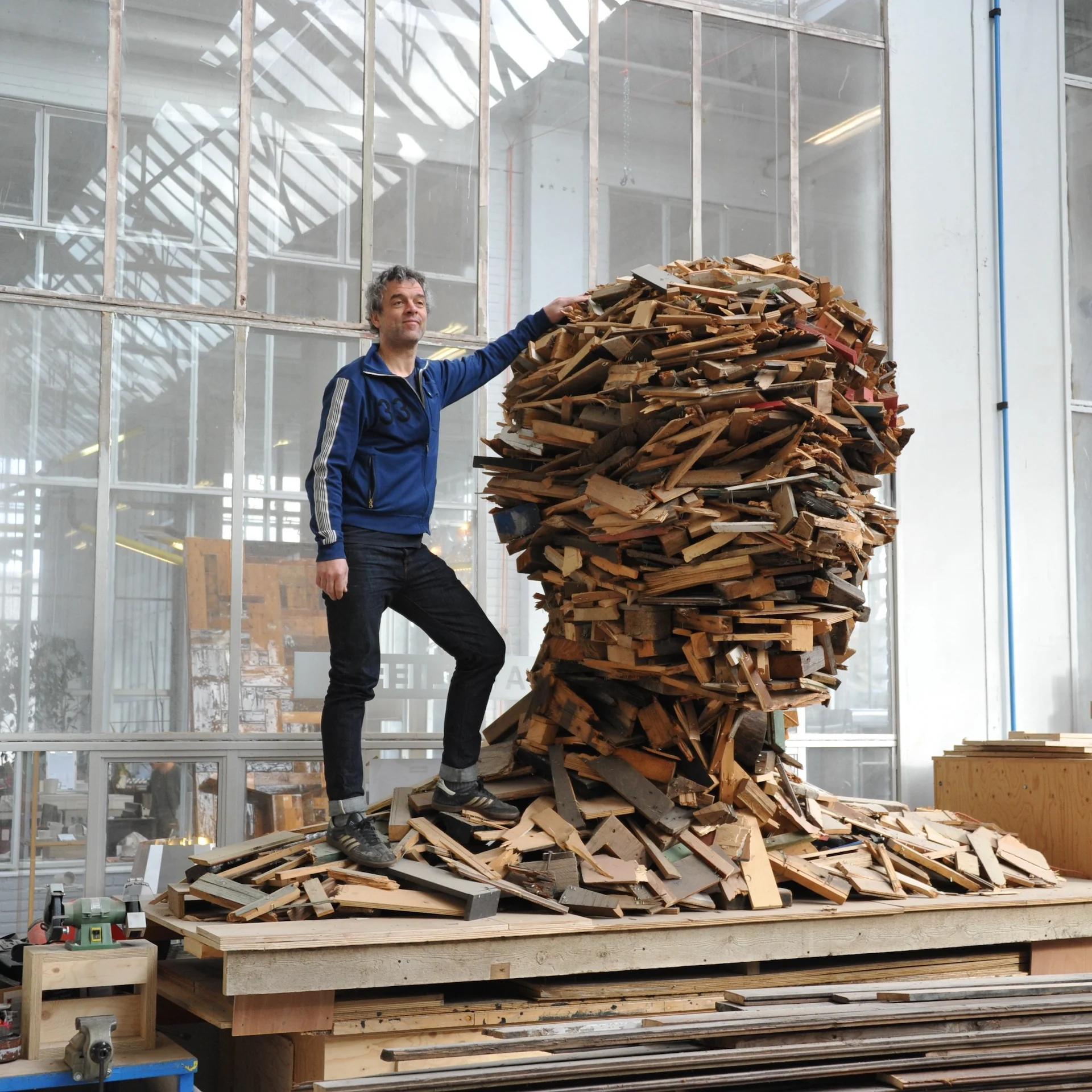
PIET HEIN EEK IN HIS EINDHOVEN WORKSHOP
Photo © Piet Hein Eek
A pioneer in the slow design movement and eco-conscious upcycling, Eek’s powerhouse status was achieved relatively early in his career, thanks to his iconic series of handcrafted, lacquered Scrapwood furniture. In 2010, he was able to take over an 11,000-square-meter former Phillips ceramic factory in Eindhoven and establish a monumental, airy new home for his growing workshop. Bit by bit, he found ways to make the most of all that space by pursuing new business ventures, cultivating a sense of community, and drawing a steady stream of visitors eager to see all that he has in the works. The sprawling campus now includes a shop, restaurant, exhibition space, showroom, and, as of last year, a chic hotel. Notably, each room of Hotel Piet Hein Eek features the work of a different international artist presented alongside a unique selection of Eek’s own furniture, one-of-a-kind antiques, and custom-built architectural elements made of reclaimed materials.
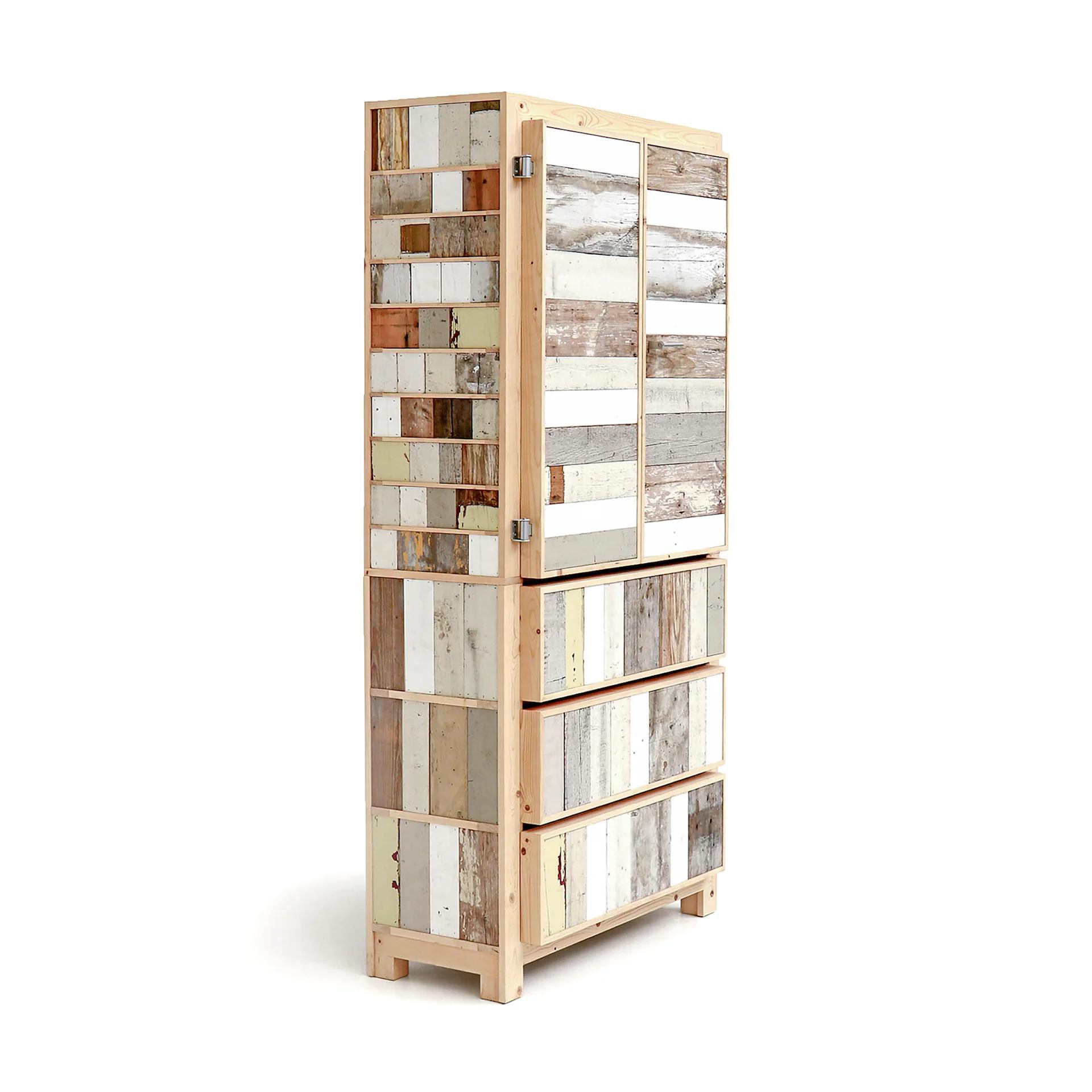
PIET HEIN EEK/ CLASSIC SCRAPWOOD CUPBOARD
Photo © Piet Hein Eek
Every Dutch Design Week—the largest annual design event in Northern Europe—Eek’s campus becomes a buzzing, must-see venue for the city’s design pilgrims. For me, the highlight of the week’s program is a very special dinner hosted by Eek and his team for a multinational guestlist of buyers and close friends, all gathered around a long communal table as the sun goes down through the floor-to-ceiling windows. This year, I had the chance to attend and enjoy this singular meal prepared by chefs from Amsterdam-based restaurant VRR before talking with the host about design, sustainability, and luxury. The experience proved to be a magical immersion into his extraordinary world.

VISITORS EXPLORING PIET HEIN EEK'S DESIGN CAMPUS IN EINDHOVEN
Photos © Piet Hein Eek
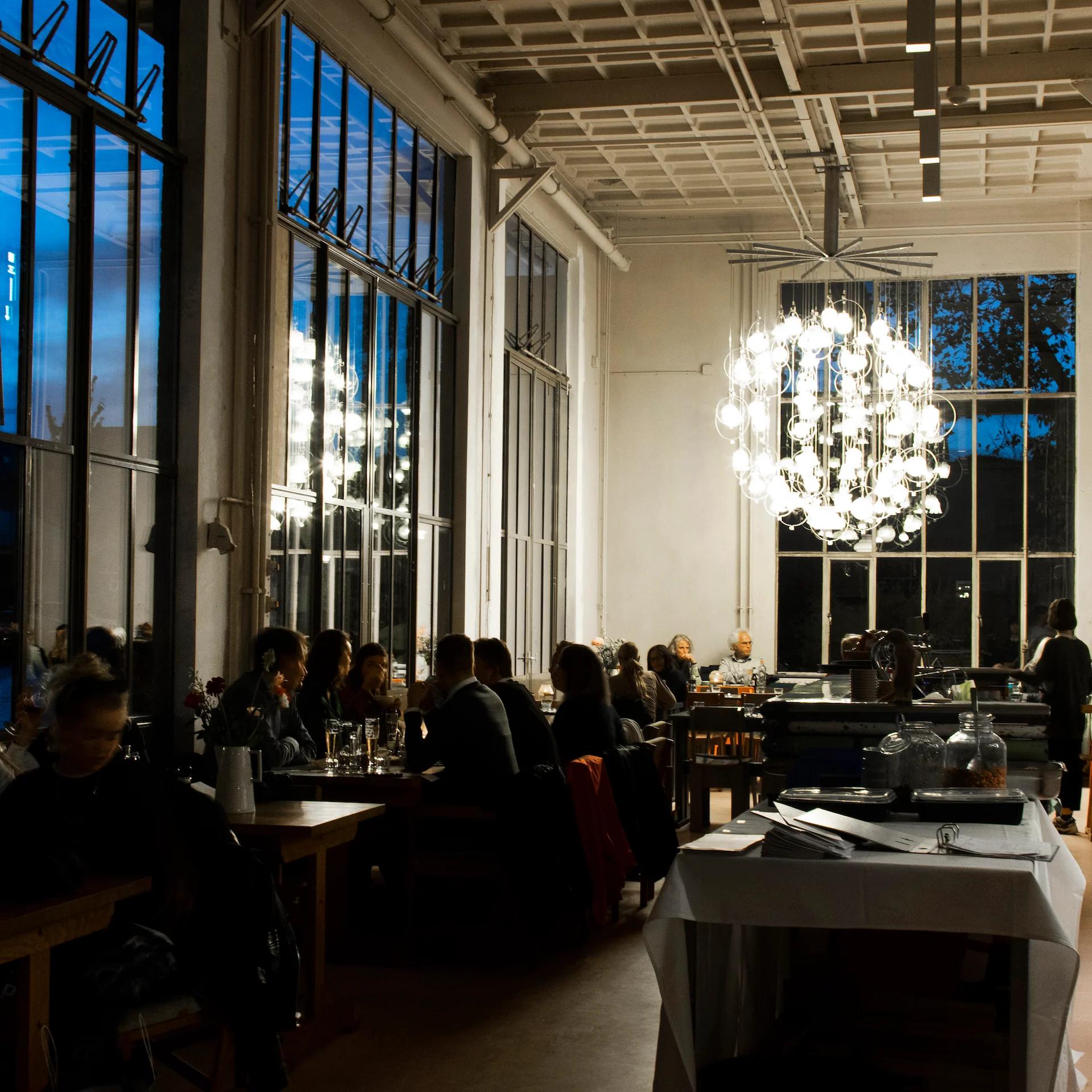
DINING AT PIET HEIN EEK'S DESIGN CAMPUS IN EINDHOVEN
Photo © Piet Hein Eek
Song-I Saba/ What is good design for you?
Piet Hein Eek/ For me, it’s most important that you stay happy with it in the long term, both aesthetically and quality wise.
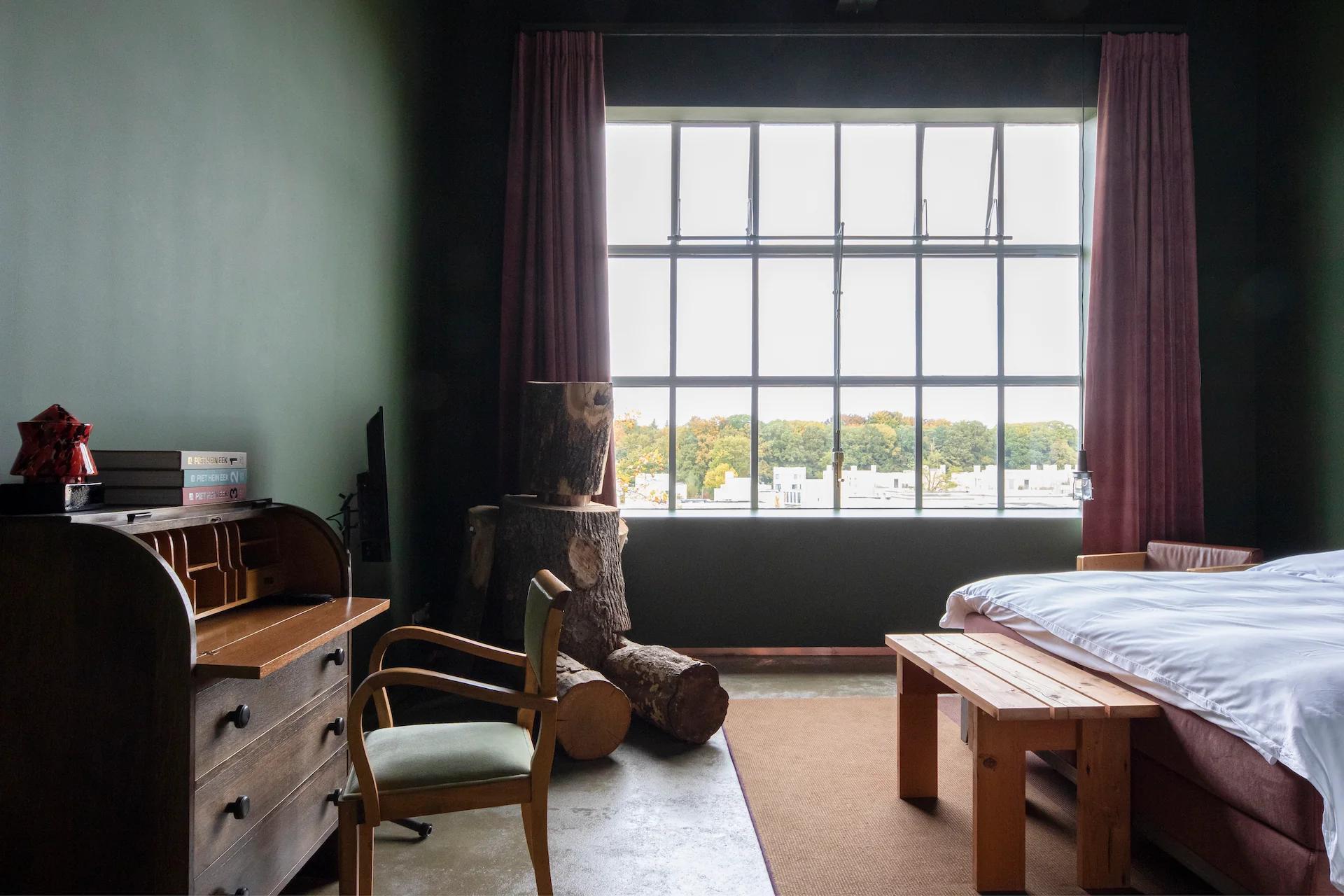
ROOM 8 AT HOTEL PIET HEIN EEK IN EINDHOVEN
Photo © Piet Hein Eek
SS/In terms of material and labor, what does “luxury” mean to you?
PHE/Time and labor are probably the most scarce resources in the world. The foundation of our capitalist economy is time efficiency, but at the same time our resources are disappearing. At a certain moment, because of automation and mechanization, there will be plenty of time, but it's less certain that we'll find new material resources. Luxury, to me, is working with your hands to make something with respect for the world.

A HALLWAY IN HOTEL PIET HEIN EEK IN EINDHOVER
Photo © Piet Hein Eek
SS/The Piet Hein Eek workshop, including the hotel, is powered by your own in-house, alternative energy source: a huge generator fed with production waste. In these times of energy instability, how can other designers and businesses follow the example you are setting?
PHE/There are many disadvantages to doing as much as we do. We were fortunate to be able to make our own hotel and even warm it with our own waste material! By creating such a complete world, there's a natural synergy between many of our processes, often not foreseen in planning. But I wouldn't advise others to do the same. I think we were lucky to survive so many problems. The only reason to do what we do is if you like working with a large team (having employees) and being occupied by the complete process of designing, manufacturing, and selling a product.

THE RESTAURANT AT PIET HEIN EEK'S DESIGN CAMPUS IN EINDHOVEN
Photo © Piet Hein Eek
SS/Each room of your hotel is completely unique, designed with one of the 13 international artists you picked. Can you talk about the process behind these collaborations?
PHE/I tried to select artists by unexpectedly falling in love with their work. I avoided being advised or seeing the work presented by the artist themselves.

UNIQUE DESIGN ELEMENTS IN HOTEL PIET HEIN EEK IN EINDHOVEN
Left: © Piet Hein Eek | Right: © Thomas Mayer
SS/Your twin daughters, Roos and Geertje, have created Tweek-Eek, a new line of sustainable jewelry that is crafted using equipment in your workshop and surplus stainless steel from your production. Do your family and design team hope to become a zero-waste operation?
PHE/I’m not focused on zero waste, but I do design and work with respect for materials, energy, and craft. This is actually an economically driven approach. Making products that last a lifetime—or even forever—is perhaps most beneficial for the world.
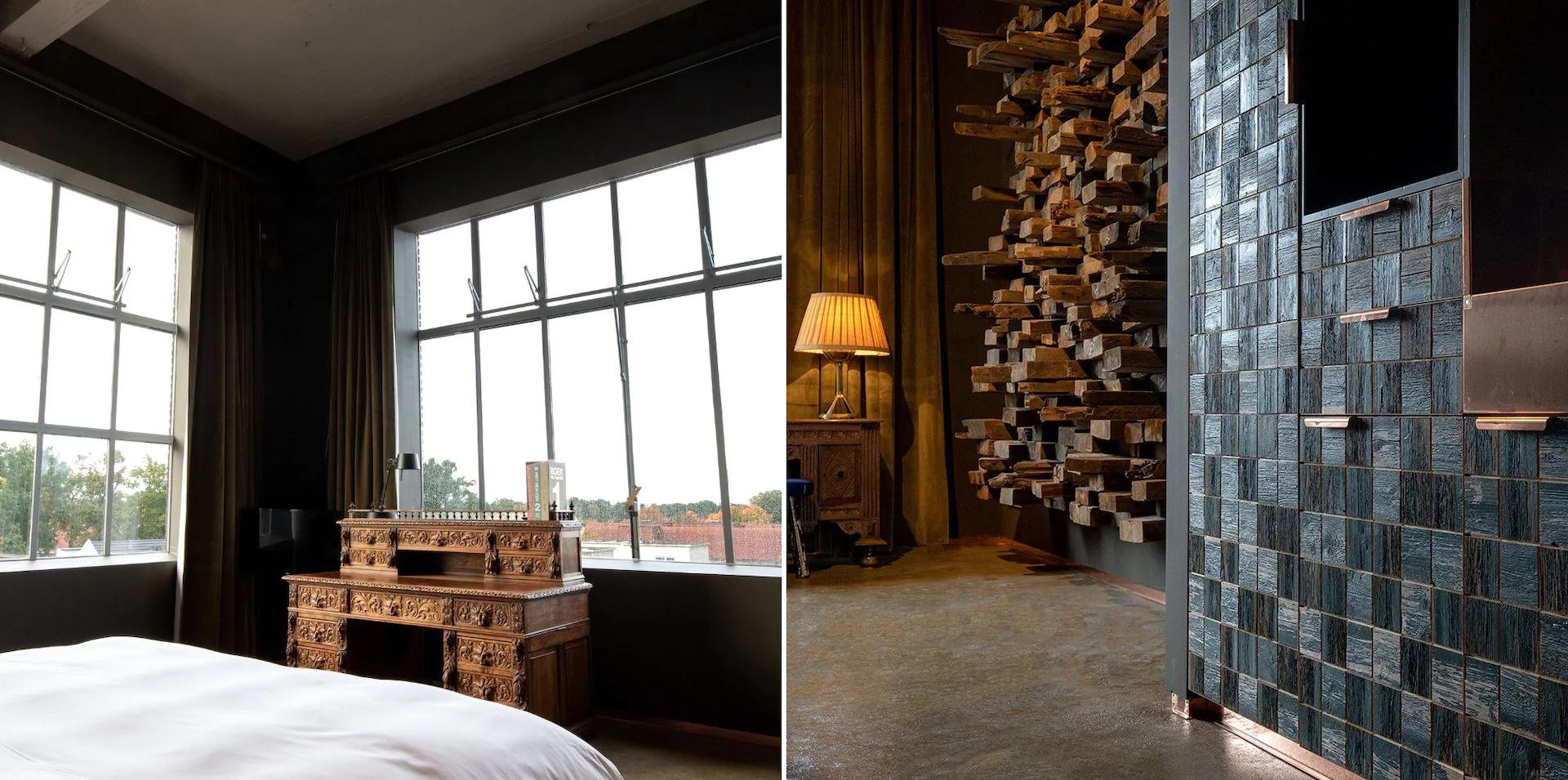
UNIQUE DESIGN ELEMENTS IN HOTEL PIET HEIN EEK IN EINDHOVEN
Photos © Piet Hein Eek
SS/What (if anything) do you collect personally?
PHE/Although several of my designs are based on collections, I stopped collecting. I try to have less and enjoy more the process of creating and being together with family and friends—preferably eating and drinking. ◆
